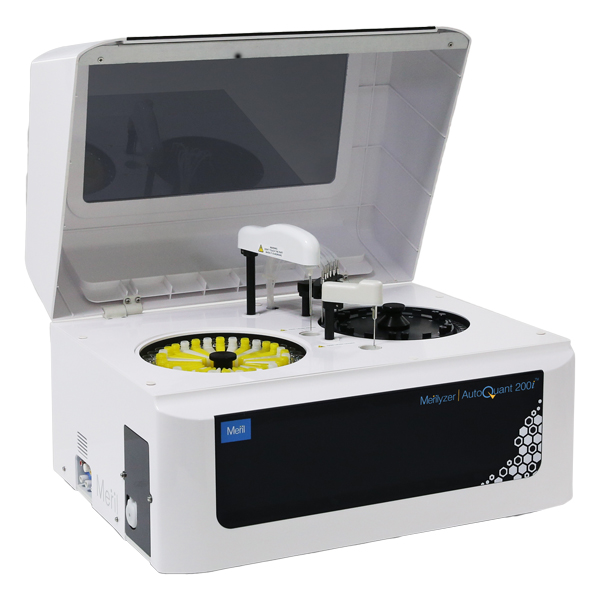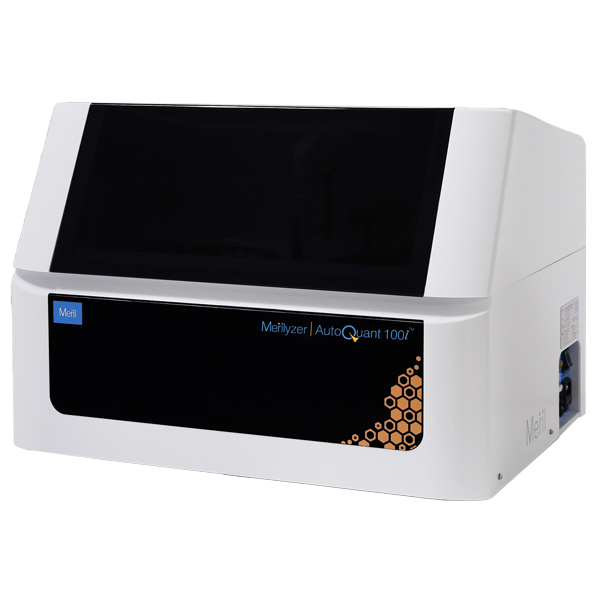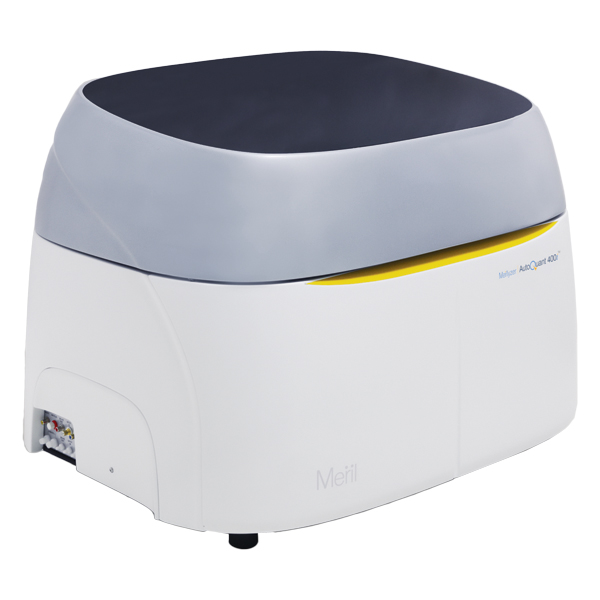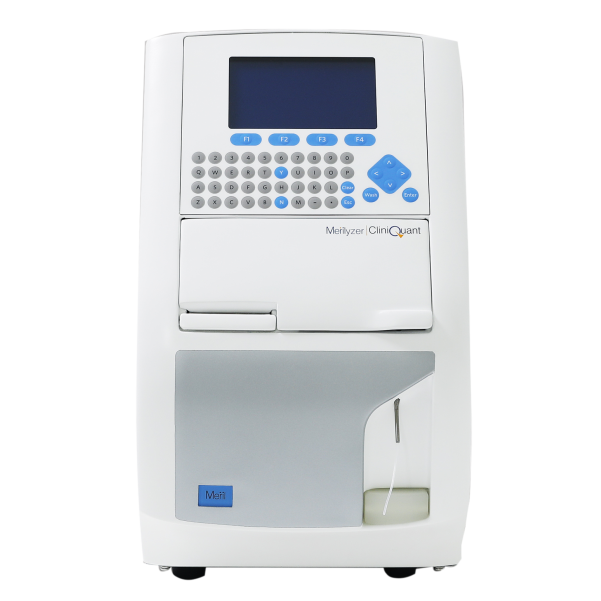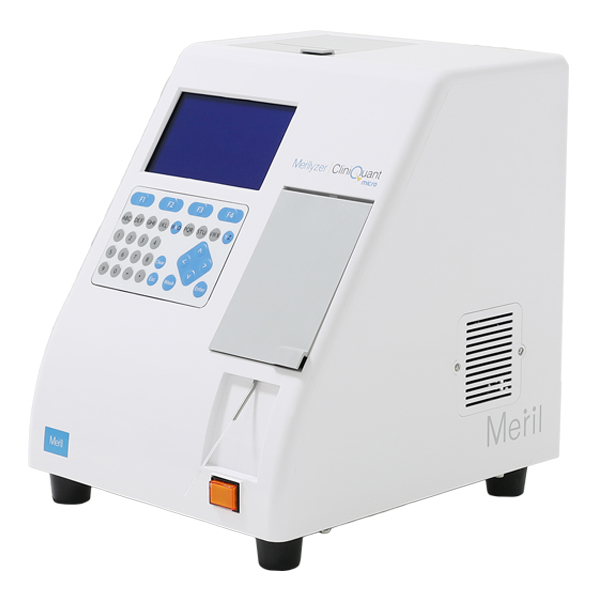AutoQuant 200 Excelus ®
Product Overview- Fully automated analyzer with throughput of 200 tests per hour
- Compact model with inbuilt laundry and cooling facility for Reagents
- Ideal for a medium size laboratory for routine tests and as backup for bigger laboratories
- Its unique software, feature offers user defined reflex action
- User friendly Fully Auto Analyzer
-
Features
-
Video
-
Open Reagents
-
System Packs
-
FAQs
-
- Maximum 200 clinical chemistry tests/hour
- Analysis Method: End Point, Fixed Time (2-point), Kinetic Rate-A, Kinetic Rate-B
- Processing of emergency samples can be dealt on priority with STAT function
- 30 positions for Reagent & Sample
- Refrigerated cooled 30 onboard reagent positions maintained by water cooled Peltier system
- 60 dismountable, easily replaceable, reusable optic plastic cuvettes to assure 100% transmittance
- Total 9 interference filters 340, 405, 450, 510, 546, 578, 620, 670, 700 nm
- Halogen Tungsten lamp with fibre optics
- K-Factor, Linear, Logit-log 4P, Logit-log 5P, Spline & Exponential calibration types possible
- User defined reflex testing
- On board cooling & On board laundry system
- Option of three different washes for forbidden pairs to minimize the carry over
- Low water consumption of 5 - 6 litres / hour
- Intuitive software of reflex testing & dedicated system packs
- Windows based software, compact design
-
-
-
-
-
What is the through put?
AQ 200 Excelus: 200 tests/hour, With ISE (optional): 300 tests/hour
-
How many reaction positions?
Reaction positions are 60
-
How many Reagents positions & sample positions?
AQ 200 Excelus: 30 Reagent positions & 30 sample positions.
-
How many probe do AQ 200 Excelus have?
Single probe for Reagent & sample.
-
How much water consumption?
4.5 to 6.5 litres for AQ 200 Excelus.
-
Can Turbidimetry Immunoassay Assay tests be performed?
Yes as per the protocol.
-
What is the advantage of AutoQuant 200 Excelus pack-size?
The bottle size for AQ 200 Excelus is 20 ml. This makes it convenient to use fresh reagents in between short period time.
-
What is maintenance?
We provide four Quarterly preventive maintenance service. All other break-downs will be attended in minimum TAT.
-
How often we should run the control?
As per GLP, the controls should be run at the start of the day. As per NABL, depending on the number of samples, each Control should be run twice or thrice a day.
-
What is the cuvette material?
PMMA, (Poly methyl methacrylate). Highly transparent, Good rigidity, Dimensionally stable.
-
What is the cuvette life?
Depends on many factors like number of tests, type of tests, wash maintenance & laboratory environment. Approx. 500-700 tests/cuvette.
-
What is the advantage over hard glass cuvette?
Hard glass cuvettes are very expensive hence accidental damage of cuvettes & mechanism wear & tear would be high for glass cuvettes, where else these are manageable with affordable cost of cuvettes.
-
What is the bulb life?
Approx. > 1000 working hours.
-
Can primary tubes be used for samples?
Yes can be used with good serum quantity.
-
What is Service TAT & application support?
Average 24 hours within HQ & 48 hours outstation.
-
What is the CPRT (Cost per reportable test) ?
CPRT is actual price per test after excluding the calibration cost, considering dead volume, chase volume etc.
-
What is CPT (Cost per test)?
CPT is price per test is the price of the volume of reagent utilized for a particular test.
-


